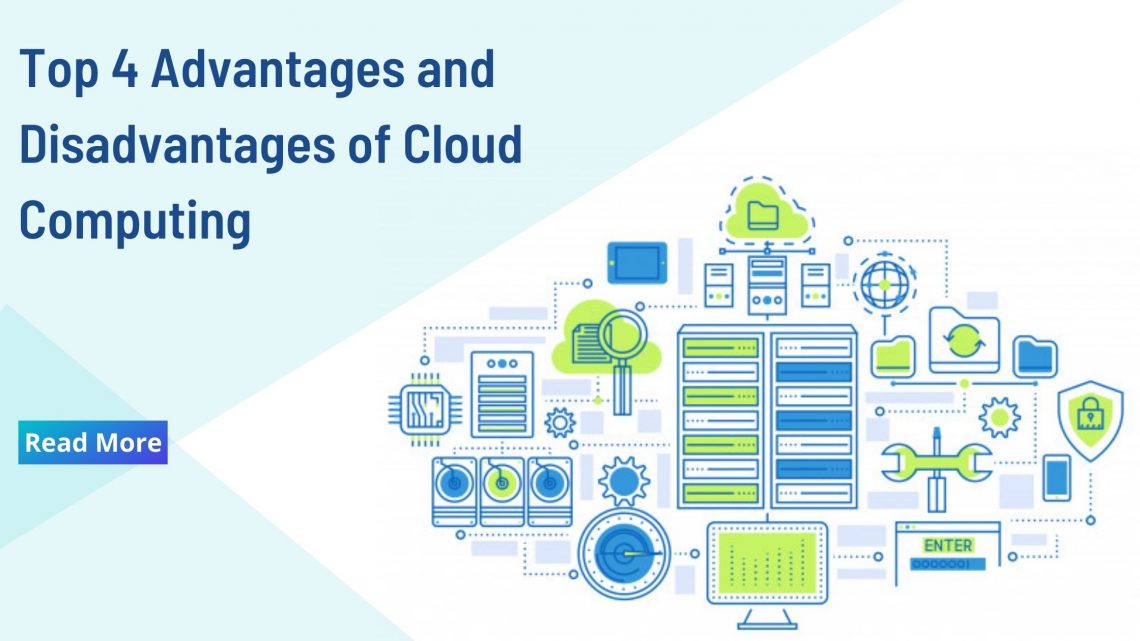
Top 4 Advantages and Disadvantages of Cloud Computing
Cloud computing will help organizations gain immense benefits from it. But there are few disadvantages to it, with the many benefits. Take some moment to explore the following advantages and disadvantages of cloud computing and make the maximum out of business technology, regardless of which cloud provider you prefer.
Advantages of Cloud Computing
Save Cost:
In consideration of cost savings, one of the most important advantages of cloud computing is IT cost. Companies, regardless of what kind or size they have to accumulate money while holding the capital and operating expenses to a minimum. You can also save valuable capital costs with little or zero in-house server storage and application needs with the assistance of cloud computing.
Also, the lack of on-site facilities eliminates the related operating costs in terms of power, air conditioning, and admin costs. You just pay for your use and can pull back whenever you want – without having to worry about any spent on IT capital. It is considered major organizations can afford to operate on the cloud.
Reliability:
Cloud computing is considered to be the most efficient and stable in-house IT technology when associated with a managed service model. Many service providers provide a Service Level Agreement ensuring 99.99% availability and 24/7/365.
This enables organizations to take advantage of a huge pool of overlapping IT resources as well as a rapid failover mechanism-even if one server malfunctions, applications, and services hosted can be easily transited to any available servers.
Maintenance:
Cloud computing offers you with enhanced and optimized IT maintenance and management abilities through resource central administration-SLA backed agreements vendor-managed infrastructure. Updates and maintenance of the IT infrastructure are avoided with cloud computing as service providers manage it.
You experience a web-based user interface that helps you to access software, services, and applications without having to install. Above all, an SLA makes sure that your IT services are delivered, operated, and maintained on time.
Strategic Advantage:
The computing resources are increasing rapidly which gives you a competitive advantage over competitors, as the time you need for IT procurement is basically none. Your organization can develop mission-critical applications that offer major market advantages, with no upfront costs and limited provided time.
Cloud computing will make you forget the technology and help you concentrate on your core business tasks and objectives. It will help you reduce down the time needed to market new software and services.
Disadvantages of Cloud Computing
Downtime:
Every day the cloud service providers take care of several customers, appear to get overwhelmed, and even face technological breakdowns. That could lead to the temporary suspension of your business processes. Besides that, if your internet access is down, you will still be unable to access any of your cloud applications or data. That is a bit of a concern!
Security:
Although cloud service providers have the finest of security standards and industry certification, there is still some risk in hosting data and crucial files on external service providers. Utilizing cloud-powered technology means you need to give access to some essential and vital business data to your service provider.
While operating on a public infrastructure, cloud service providers are opened up for constantly address security issues. The ease with which cloud resources are procured and accessible may offer wicked users the ability to scan, locate, and exploit the system’s numerous loopholes and vulnerabilities.
For example, a multi-tenant cloud infrastructure where multiple users are sharing the same server, an attacker can easily attempt to reach into other users’ data which are stored on the same server as theirs. Although these vulnerabilities and loopholes are unlikely to surface, likewise the probability of such a compromise is not a great deal.
Vendor Lock-in:
Even though cloud service providers claim cloud will be very convenient to use and integrate, cloud service switching is something that has more to develop. Organizations may find it hard to migrate their services easily from one provider to another. In any other network, hosting and leveraging current cloud frameworks will build compatibility and support issues. For instance, applications built on the Microsoft Development Framework (.Net) may not run efficiently on the Linux Platform.
Restricted Control:
Your service provider holds & manages the cloud infrastructure completely, passing limited control to the user. On top of that, the customer can only command & manage software, data, services run, and not the backend infrastructure. Primary administrative activities such as access to server shells, upgrading & configuration management can not be passed on to the end-user or customer.
How the benefits of cloud computing can effectively overshadow its shortcomings appears to be incredible. With advantages such as lower prices, reduced downtime, and fewer efforts for management activities claim themselves, there’s no question cloud computing can be highly advantageous to us. For any Tally on cloud information visit Tally-on-cloud.com.
Read other related blogs:
–How Tally on Cloud Works? The concept behind it
–5 major reasons when you should opt for a Fully Managed Servers

